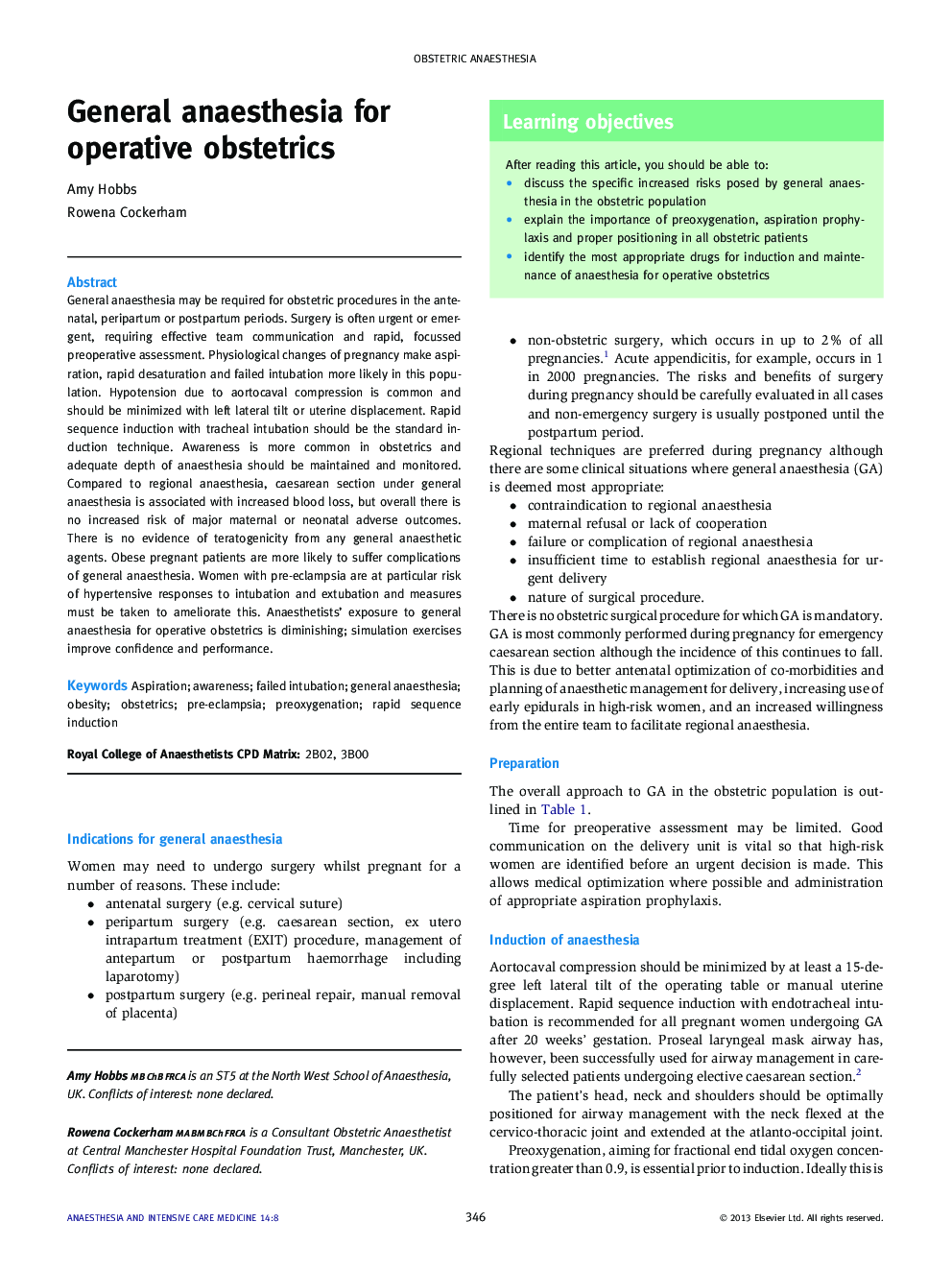| Article ID | Journal | Published Year | Pages | File Type |
|---|---|---|---|---|
| 2742730 | Anaesthesia & Intensive Care Medicine | 2013 | 4 Pages |
General anaesthesia may be required for obstetric procedures in the antenatal, peripartum or postpartum periods. Surgery is often urgent or emergent, requiring effective team communication and rapid, focussed preoperative assessment. Physiological changes of pregnancy make aspiration, rapid desaturation and failed intubation more likely in this population. Hypotension due to aortocaval compression is common and should be minimized with left lateral tilt or uterine displacement. Rapid sequence induction with tracheal intubation should be the standard induction technique. Awareness is more common in obstetrics and adequate depth of anaesthesia should be maintained and monitored. Compared to regional anaesthesia, caesarean section under general anaesthesia is associated with increased blood loss, but overall there is no increased risk of major maternal or neonatal adverse outcomes. There is no evidence of teratogenicity from any general anaesthetic agents. Obese pregnant patients are more likely to suffer complications of general anaesthesia. Women with pre-eclampsia are at particular risk of hypertensive responses to intubation and extubation and measures must be taken to ameliorate this. Anaesthetists' exposure to general anaesthesia for operative obstetrics is diminishing; simulation exercises improve confidence and performance.
